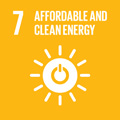- Docente: Alessandro Zambon
- Credits: 6
- SSD: ING-IND/24
- Language: English
- Moduli: Alessandro Zambon (Modulo 1) Alessandro Zambon (Modulo 2)
- Teaching Mode: In-person learning (entirely or partially) (Modulo 1); In-person learning (entirely or partially) (Modulo 2)
- Campus: Bologna
- Corso: Second cycle degree programme (LM) in Chemical and Process Engineering (cod. 6706)
-
from Sep 16, 2025 to Nov 12, 2025
-
from Nov 18, 2025 to Dec 17, 2025
Learning outcomes
Knowledge about thermodynamic properties of fluids and materials and their use in phase equilibrium and reaction problems. Knowledge about the fundamentals of thermodynamic analysis for energy and process industry applications.
Course contents
1. Introduction / Course Overview
This course begins with a brief review of fundamental thermodynamic concepts, ensuring a solid foundation for more advanced topics. The key areas covered in the introduction include:
- Basic Thermodynamic Quantities: A recall of essential properties such as enthalpy, internal energy, specific heat capacities, and their physical significance in thermodynamic systems.
- PVT Behavior of Pure Substances and the Ideal Gas Law: Review of the relationships among pressure (P), volume (V), and temperature (T) for pure substances, including ideal gas behavior and the limitations of the ideal gas law.
- The First Law of Thermodynamics: Re-examination of the first law for both closed and open systems, including its application in solving simple energy balance problems involving heat and work interactions.
2. Second Law of Thermodynamics and Its Applications
This section focuses on the consequences and applications of the Second Law of Thermodynamics, including its role in defining system behavior, evaluating thermodynamic properties, and guiding energy conversion efficiency. The key topics include:
2.1 Derivation of Constitutive Equations:
- Combined use of the First and Second Laws to derive Gibbs and Maxwell relations.
- Application of Gibbs–Maxwell relationships to calculate thermodynamic properties.
- Development and interpretation of state diagrams and property relationships.
- Stability of equilibrium and system evolution based on thermodynamic constraints.
- Conditions for phase equilibrium, particularly liquid–vapor equilibrium.
2.2 Thermodynamic Models for Pure Components:
- Use of Cubic Equations of State (EoS) and generalized correlations for gases and liquids.
- Evaluation of thermodynamic properties for pure substances.
- Solving practical problems involving real fluid behavior.
2.3 Energy Conversion and Work:
- Concepts of ideal work, lost work, minimum work input, and maximum work output.
- Definition and application of exergy for efficiency analysis.
- Thermodynamic analysis of engineering cycles, including:
- Compressible flow systems
- Compressors
- Power cycles (e.g., Rankine, Brayton)
- Refrigeration cycles
3.Multicomponent Systems and Advanced Equilibria
This section extends thermodynamic principles to mixtures and chemically reacting systems, with a focus on non-ideal behavior in multicomponent systems.3.
3.1 Ideal and Non-Ideal Mixtures
- Definition and evaluation of excess properties (e.g., excess enthalpy, excess Gibbs energy).
- Energy balances in non-ideal mixtures.
- Mixing enthalpy and use of enthalpy–concentration charts.
3.2 Thermodynamic Models for Non-Ideal Mixtures
- Description of non-ideal behavior using:
- Fugacity
- Activity
- Activity coefficients
- Methods for the estimation and calculation of these quantities.
3.3 Multiphase Equilibria
- General multiphase equilibrium conditions based on chemical potential equality.
- Vapor–Liquid Equilibrium (VLE):
- Qualitative behavior
- Ideal models (e.g., Raoult's Law, Dalton’s Law)
- Liquid–Liquid and Vapor–Liquid–Liquid Equilibrium (VLLE):
- Use of non-ideal models (e.g., NRTL, UNIQUAC).
3.4 Advanced Mixture Modeling
- Extension of Equations of State to multicomponent systems:
- Gas–liquid and gas–solid systems
- Polymer solution thermodynamics
- Polymer–polymer blends
- Liquid–Solid Equilibrium: principles and examples.
3.5. Chemical Reaction Equilibrium
- Derivation of the general equilibrium condition from thermodynamic principles (minimization of Gibbs energy).
- Analysis of temperature and pressure effects on chemical equilibrium.
- Example applications:
- Non-ideal reacting systems
- Systems involving pure solid phases
- Systems with liquid and solid phase coexistence
- Treatment of multiple simultaneous reactions in equilibrium.
Readings/Bibliography
Suggested Textbooks:
-
S. I. Sandler, Chemical and Engineering Thermodynamics, 3rd Edition, Wiley and Sons, 1999.
-
J. M. Smith, H. C. Van Ness, and M. M. Abbott, Introduction to Chemical Engineering Thermodynamics, 7th Edition, McGraw-Hill Education, 2005.
These textbooks contain most of the theory and results considered in the course.
Additional references that provide further insight include:
-
R. C. Reid, J. M. Prausnitz, and B. E. Poling, The Properties of Gases and Liquids, McGraw-Hill, New York, 1987.
-
J. M. Prausnitz, R. N. Lichtenthaler, and E. G. de Azevedo, Molecular Thermodynamics of Fluid-Phase Equilibria, 3rd Edition, Prentice Hall, New Jersey, 1999 — particularly focused on various thermodynamic models.
-
E. Winterbone, Advanced Thermodynamics for Engineers, Elsevier, 1996 — for examples on the use of exergy in the analysis of thermodynamic processes.
Teaching methods
Lectures
Assessment methods
The course assessment consists of a written exam and an oral exam.
The written exam involves solving one to three exercises related to the thermodynamics of pure substances and mixtures. The use of personal notes and the course textbook is allowed. Laptops may also be used, although their use is not required and generally not recommended.
To pass the written exam, students must obtain a minimum score of 16 out of 30.
The oral exam focuses on discussing various topics covered during the course, including both theoretical aspects and practical applications. It typically includes two questions and carries more weight than the written exam, contributing approximately two-thirds of the final grade.
Students must complete the oral exam within two exam sessions after passing the written exam. If a student misses this deadline or fails the oral exam twice, they will be required to repeat and pass the written exam before attempting the oral exam again
Teaching tools
The slides presented during the lessons, as well as other supporting materials (exercises, mock exams, etc.), will be made available on the course website during the semester
Office hours
See the website of Alessandro Zambon
SDGs

This teaching activity contributes to the achievement of the Sustainable Development Goals of the UN 2030 Agenda.
